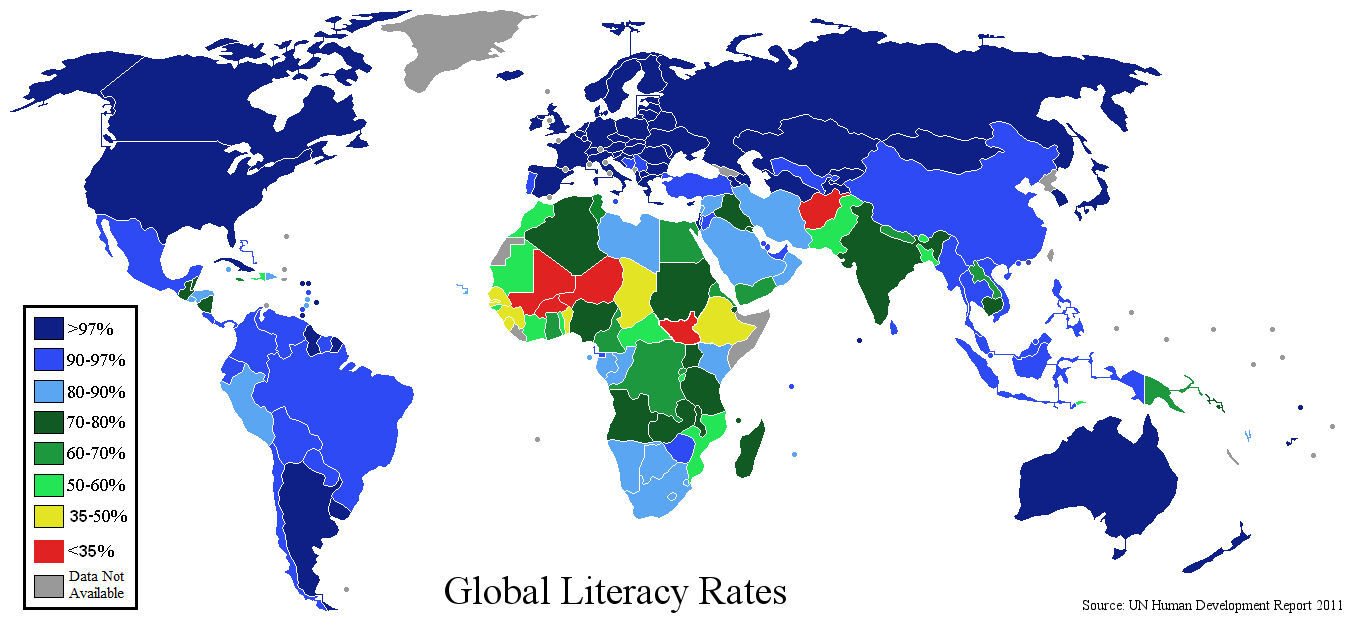International Literacy Day, Sept 8th
 Literacy is a well-used indicator to measure the state of a country’s education levels. There are many different institutions that gather data on literacy and there are many different definitions.
Literacy is a well-used indicator to measure the state of a country’s education levels. There are many different institutions that gather data on literacy and there are many different definitions.
- UNESCO Institute for Statistics (UIS) is responsible for monitoring international literacy targets associated with Education for All (EFA) and the Millennium Development Goals (MDGs). According to new data released by the UIS, literacy rates for adults and youth continue to rise. Women and girls are gaining ground, however they stillmake up more than 60% of the global illiterate population.
- The 2011 UN Human Development Report used literacy rates for its global development index. The figures from the report represent a mixture of data collected by the UNESCO Institute for Statistics, national self-reported data, and the UNDP’s global projection models. Counties in the African continent are noticeably prominent in the lowest rankings.
- Here in the US, the National Center for Educational Statistics released a National Assessment of Adult Literacy report in 2003. According to this report, the national direct estimates of adults lacking Basic Prose Literacy Skills (BPLS) are just over 14 percent.
Literacy is more than a basic reading ability, but rather an indication of how we use written information to function in society. Strong literacy skills are closely linked to the probability of having a good job, decent earnings, and access to training opportunities. Literacy is a human right, a tool of personal empowerment and a means for social and human development. It brings asustainability to development and promise for the future.
